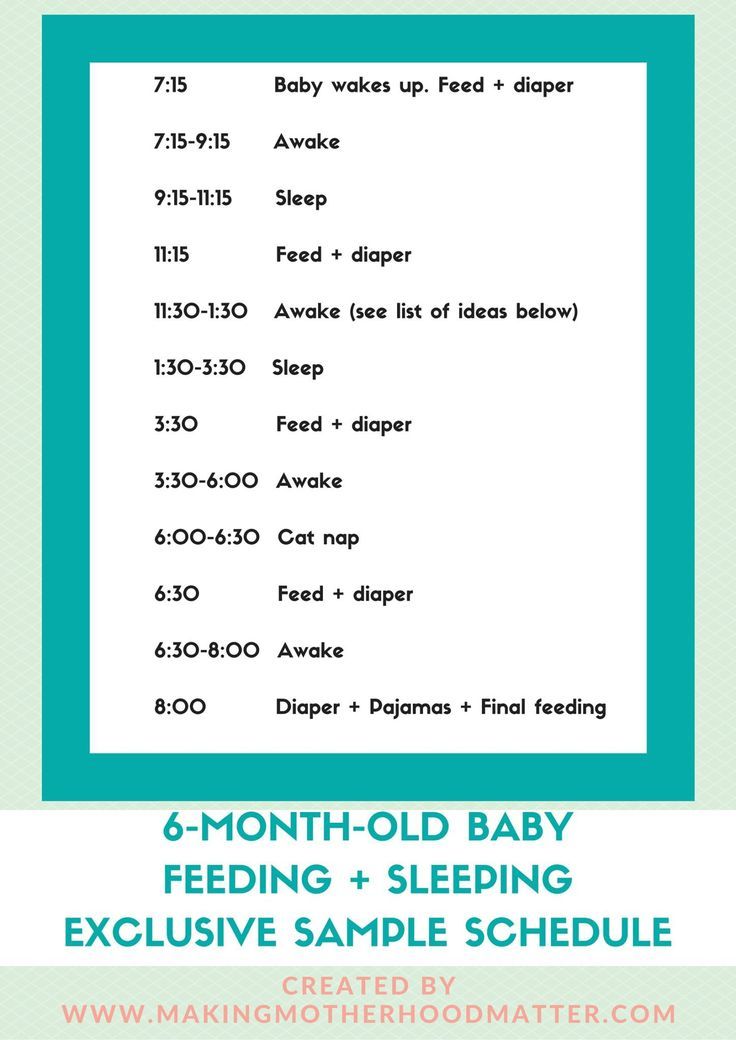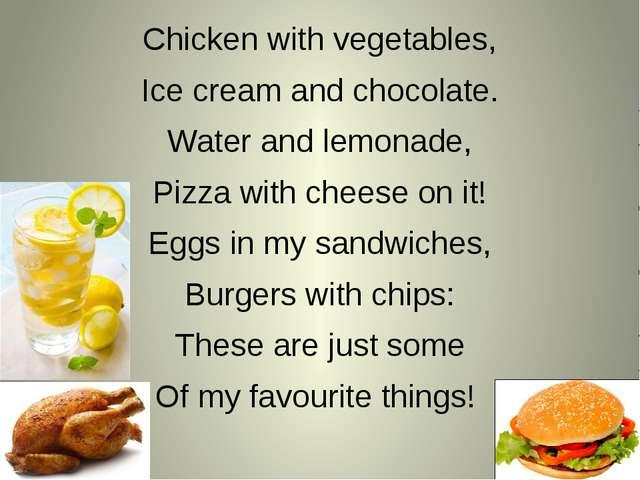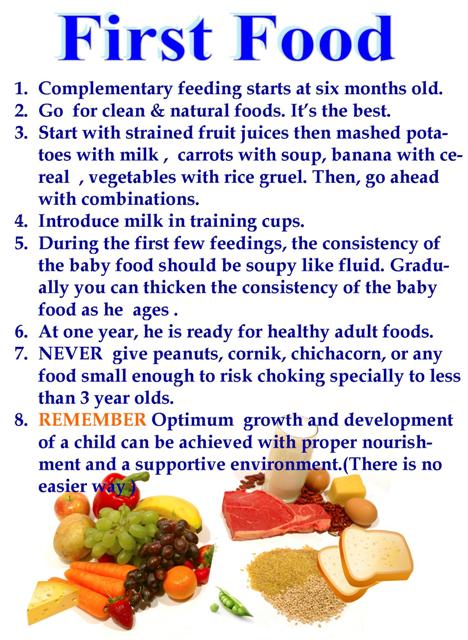Baby food age 8 months
Top Foods for 8 Month Old Baby
Here's everything you need to know to feed your 8 to 9 month old baby, including how much milk and solid food to offer as well as best foods.
There are three methods of starting solids. You may have exclusively served purees, chosen to do finger foods baby led weaning style, or taken the combination approach.
Regardless of which feeding method you chose, by 8 months, 9 months at the latest, your baby's meals should look like what I'm about to share.
So let's dive in!
Jump to:- Frequently Asked Questions
- Feeding Schedule
- How to build a well-balanced plate
- Real Life Examples
- Tips for Graduating from Purees
- Best Baby Foods for 8-9 Months
- Tips for Helping your Baby Eat
- What Foods to Avoid
- Favorite Feeding Tools
- Additional Resource
Frequently Asked Questions
How many meals should an 8 month old baby eat?
By eight months, your baby should be eating at least two meals a day. Some suggest three meals at this age, but again, every baby is different! There’s no need to force your baby to eat 3 meals a day when they’re simply not interested or hungry for it.
Two meals are plenty! You will also save yourself a lot of frustration by following your baby’s cues.
Some even suggest serving three meals and a snack. I want to reassure you that your baby does NOT need a snack until closer to 1 year of age. And even then, your baby may not be interested. Did I just hear a sigh of relief?
What’s more important than making sure your baby gets x amount of food is you creating a positive and relaxing mealtime experience for your baby.
If you are frantically trying to get food on the table and not able to enjoy sharing a meal alongside your baby, they will absolutely sense that, which can negatively affect their ability to eat.
Both of my babies weren’t ready for 3 meals until around 9 months, my son even later because he was born prematurely. But they did great with those 2 meals. And I enjoyed not having to prepare yet another meal for a little while longer ;).
And I enjoyed not having to prepare yet another meal for a little while longer ;).
I encourage you to always have your baby join you at the table so you will know when they’re ready for that last meal. If they start smacking and reaching for your food, they’re most likely ready.
I know that was a long answer, but to state simply, your baby should be eating at least 2 meals a day, working towards 3 meals by 9-10 months.
How much milk does a 8 to 9 month old need?
Milk, whether it's breast milk or formula, is and will continue to be the most important part of your child's diet up until they turn one.
At this age, daily milk intake should be around 25-32 ounces and if you are nursing, about 4-6 times a day. But keep in mind, every baby is unique. The best thing you can do is use these recommendations as a guide, but follow your baby's lead first and foremost.
It becomes a bit more challenging to do so when giving milk in a bottle because you can see exactly how much your baby drinks.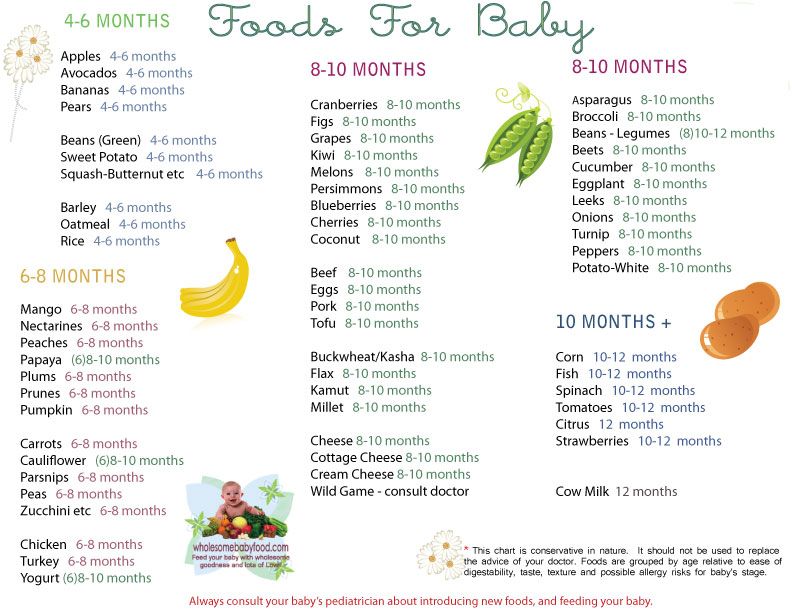 It's so easy to get caught up with the numbers. If your baby is turning away, don't force them to finish the bottle.
It's so easy to get caught up with the numbers. If your baby is turning away, don't force them to finish the bottle.
Trust their innate ability to self-regulate. Just like how you eat different amounts of food each day, it's NORMAL for your baby to drink different amounts at each feeding.
Your baby may start to drink less as they begin eating more solid food, and that's to be expected. Weaning is a gradual process. Continue to offer milk before meals and stay in tune with your baby's cues.
How much solid food should an 8 to 9 month old eat?
The American Academy of Pediatrics recommends that your baby consume between 750 and 900 calories each day, of which about 400-500 should come from breastmilk or formula.
Now I don’t know about you, but as someone who struggled with an eating disorder for a long time, I don’t want to count calories, not even for my baby. Also, it totally goes against the baby led approach, which is to TRUST and follow your baby’s innate ability to self regulate.
Just because you offer x amount of food, doesn’t mean your baby is going to eat it all. And neither should you force them to clean their plate. At this stage, it's still about discovery and learning about what food feels, smells, and tastes like.
Helping them develop a healthy relationship with food starts now! And our feeding practices matter. A LOT. What's even more important than the food you serve and how much gets eaten is a positive mealtime experience. Help your child stay positive and curious.
So the main takeaway is to prioritize milk feedings and consistently offer well-balanced meals that will help meet their nutritional needs. More on this below!
If your baby is growing, following their unique growth curve, and happy, they are eating the amount of food that’s RIGHT for them, even if it’s less or more than the recommendations or what you think they need to be eating.
Does an 8 month old baby need water?
While water may be introduced to 6 month olds and older, it is not necessary. Breastmilk or formula will be enough to meet their hydration needs. As long as your baby is having regular wet diapers, there's no need to worry.
Breastmilk or formula will be enough to meet their hydration needs. As long as your baby is having regular wet diapers, there's no need to worry.
However, you may want to offer sips of water (no more than 2-3 ounces/day so it doesn't displace milk) to help them practice cup drinking and to get used to the flavor of water.
Drinking from a cup is a lifelong skill, and by introducing early, it will give them plenty of time to explore and practice. Yes, it’s going to be messy but will be well worth it when it comes time to transition your baby from the breast or bottle.
By then your baby will have the skills to drink independently and will easily be able to make the shift.
Keep in mind the goal at this stage is not to get them to drink a large amount of water. It is practice practice!
Feeding Schedule
I want to start off by saying that having a schedule doesn't mean you have to be super rigid with it. There's always room for flexibility.
Babies thrive on predictability and routine, and it can also help you to plan your day accordingly.
In terms of when you should offer your baby their meals, it's really up to you! For us, mornings are hectic, not to mention baby drank a lot of milk upon waking, so we started with lunch, then dinner, and added breakfast last.
Even though we are mainly talking about food, let's not forget that sleep is a very important piece to all of this. A well-rested baby means a happier baby who will be more interested in exploring the world of food.
I'm sharing our schedule to give you an idea of how to fit in two meals along with milk and nap times. You will notice this pattern - eat, play, sleep.
- 7 am - wake up and milk
- 9-10:15 am - Nap 1
- 10:20 am - Milk
- 11 am - Meal #1
- 12:30-1:30pm - Nap 2
- 1:35 pm - Milk
- 3:30-4:30 pm - Nap 3
- 4:35 pm - Milk
- 6 pm - Meal #2
- 6:30 pm - Milk
- 7 pm - bedtime
How to Cook the Softest Scrambled Eggs for Baby
What does a well-balanced plate look like in practice? With so many food choices, serving meals that will help meet your child’s nutrient needs can feel overwhelming.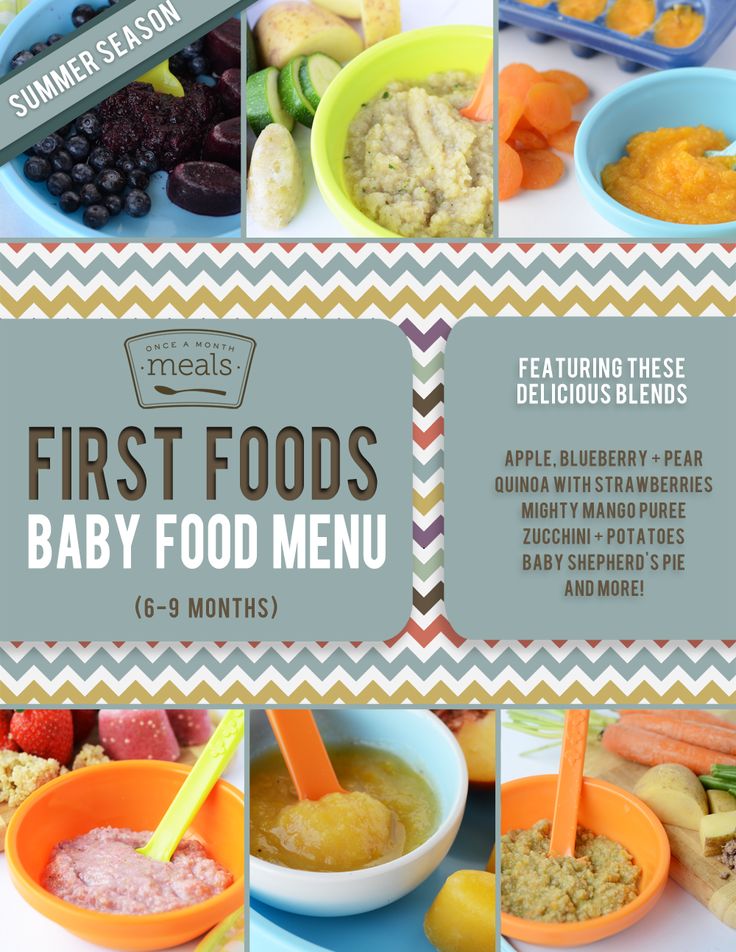 Please allow me to simplify and make this goal achievable and fun.
Please allow me to simplify and make this goal achievable and fun.
- Offer one high-iron food at each meal
- Offer one high-energy food at each meal
- Fruits/vegetables
I want to elaborate a little bit on high-energy foods. Think carbohydrates and fats. Some examples include nuts and seeds, avocado, full fat yogurt, grains, bread, etc.
Fat is an essential nutrient at this age for optimal brain development and growth. And these calorically dense foods are a great way to make every bite count.
You’ll notice that some of the foods overlap. For instance, avocado is a fruit but it’s also a high-energy food or beans are a good source of iron but also a vegetable. Simply decide which category you want the food to count as and fill in the rest.
In terms of the amount, start with small portions to make it less overwhelming for your baby. This will also reduce food waste. You can always offer more if they seem interested.
Real Life Examples
Here are some meals I served to my baby.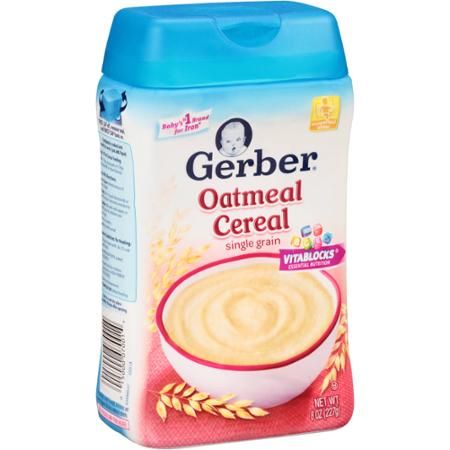
- Tofu Veggie Scramble Oatmeal Balls
- Iron food - tofu, beans
- High-energy food - oatmeal
- Vegetables - bell peppers, zucchini, onion
- Quinoa (iron) with avocado (high-energy), purple cauliflower (vegetable)
- Beef Stroganoff
- Iron food - beef
- High-energy food - pasta
- Vegetables - carrots, bell peppers, mushrooms, peas
- Turkey beet meatballs (iron), Avocado rolled in flax seeds (high-energy), Broccoli (vegetable)
Regardless of which feeding method you chose, the goal is that by 9 months, at the latest, your baby is being introduced to a wide variety of flavors and textures from all food groups.
That's because research shows that infants who are introduced to textures by 9 months generally have less feeding problems and greater food acceptance down the road.
If you’ve been spoon feeding, start by preloading the spoon and allowing them to pick it up themselves. There may be great resistance at first, and your baby may want you to continue feeding them. But stand strong.
There may be great resistance at first, and your baby may want you to continue feeding them. But stand strong.
Your baby will eventually realize that mommy or daddy won’t feed them no matter what and begin to explore for themselves.
Also, it’s completely normal for your baby to start eating less during this transition. Managing textured foods is a whole new experience, and your baby will need some extra time to learn the skills to handle them.
And they will when given plenty of opportunities to do so. Therefore, don’t fall back on purees. Keep marching forward. In the meantime, you can increase the amount of milk feeds.
For more tips, here's an in-depth post on how to transition from purees to table foods.
Best Baby Foods for 8-9 Months
By this age, your baby is working on developing their pincer grasp, which involves using the thumb and the index finger to pick up small pieces of food. You can start serving bite-sized pieces to help practice this new skill.
But do continue offering big pieces of food to minimize frustration and to allow for practice with taking bites.
Iron-rich foods
I've dedicated a whole post to this along with recipes! I believe you will find it extremely helpful.
Best iron-rich foods for babies
High-energy foods
- Avocado
- Oatmeal
- Nuts and Seeds
- Lentils
- Quinoa
- Yogurt
- Bread
- Pasta
- Muffins
- Dips/Sauces
- Waffles
- Pancakes
Best Weight Gain Foods for Babies
Fruits and Vegetables
- Butternut squash
- Sweet potatoes
- Beetroot
- Cauliflower
- Broccoli
- Bell peppers
- Mashed peas
- Zucchini
- Carrots
- Cabbage
- Mushrooms
- Parsnip
- Mango
- Apple
- Pear
- Banana
- Kiwi
- Berries (strawberries, raspberries, blueberries), smashed)
- Watermelon
- Peaches
When cooking vegetables, don't forget to season with herbs and spices!
Tips for Helping your Baby Eat
- Offer meals when your baby is happy and seems interested in eating.

- Make sure foods are soft and easy to smash with your fingers.
- While their hands will be their best tools for quite some time, offer utensils from the beginning for exposure and familiarity.
- Don’t be afraid to season the food with a wide variety of herbs and spices. It’s such a delicious and easy way to expose them to all the different flavors. Hold off on salt!
- For foods that are harder to pick up, like rice and quinoa, mash with some sweet potato or avocado to make them easier to eat.
- Your baby may still be doing a lot of playing and throwing at this point, and that’s ok. They are still learning to self feed and it’s a skill that takes A LOT of practice. So be consistent and patient. Stick to your mealtime schedule and eat alongside your baby so they can watch and learn from you.
- If your baby doesn’t eat much during mealtime, you can offer a little bit of breastmilk/formula afterwards.
What to do when baby doesn't eat
What Foods to Avoid
- Hard or crunchy texture - raw fruits and vegetables, whole nuts, crackers, popcorn, etc.

- Sticky texture - a glob of peanut or nut butter
- Honey until 1 year as it can lead to botulism - it’s unsafe even if it’s uncooked. Be sure to read the labels as it’s an ingredient in a lot of unexpected foods.
- Unpasteurized milk, yogurt, cheese, or juice (which should be avoid until 2)
- Milk for drinking (can be used in recipes)
- High-sodium foods
- Added sugars
Favorite Feeding Tools
Here are the essentials that I know will save you time and your sanity! I know it’s tempting to buy all the adorable products that are out there. But truly, these are really all you need!
Additional Resource
If you are struggling to move beyond purees or feeling overwhelmed trying to give your baby the best, here's a complete roadmap that would show you through daily videos and photos of what foods and how to serve them to your baby AND the rest of the family at the same time!
How much should my baby eat? A guide to baby food portions
- Community
- Getting Pregnant
- Pregnancy
- Baby names
- Baby
- Toddler
- Child
- Health
- Family
- Courses
- Registry Builder
- Baby Products
Advertisement
Wondering how much to feed your baby? This can be hard to figure out, especially when you're starting solids and most of your baby's food ends up on your little one or the floor. It's also difficult to determine how much an 8-month-old (or older baby) should eat – babies this age are more interested in solid foods but still get most of their nutrition from breast milk or formula. This visual guide to baby food portions can help you figure out how much your baby should eat at every stage.
It's also difficult to determine how much an 8-month-old (or older baby) should eat – babies this age are more interested in solid foods but still get most of their nutrition from breast milk or formula. This visual guide to baby food portions can help you figure out how much your baby should eat at every stage.
Photo credit: Karla Martin for BabyCenter
How much should my baby eat?
Do you worry that your baby is eating too little or too much? Your baby will self-regulate her food intake based on what their body needs, so let their appetite be your guide.
It's helpful to have a reference point, however. Here are photos of how much solid food a baby typically eats in a day. You can also ask your baby's doctor for feeding advice.
This visual guide shows:
- Portions for infants who are new to solids (typically 4 to 6 months)
- Two sample meals for a younger baby (6 to 8 months)
- Three sample meals and two snacks for an older baby (8 to 12 months) from a menu developed by the American Academy of Pediatrics (AAP)
Your little one may eat less or more than what's shown here. Your job is to provide a variety of healthy foods at regular intervals without pressure, and their job is to decide what and how much to eat.
Your job is to provide a variety of healthy foods at regular intervals without pressure, and their job is to decide what and how much to eat.
Photo credit: iStock.com / UntitledImages
Watch for signs your baby is full
Lots of factors – including activity level, growth spurts or plateaus, illness, and teething – will affect your baby's appetite, which can vary daily.
End feeding when they signal that they're done. Signs of being full include:
- Turning their head away
- Refusing to open their mouth for another bite after they've swallowed (resist the urge to encourage your baby to have one last spoonful)
- Leaning back in their chair
- Playing with the spoon or food rather than eating
Photo credit: Karla Martin for BabyCenter
How much a 4- to 6-month-old should eat
When your baby is developmentally ready for solids, typically around 4 to 6 months, talk to their doctor about introducing solid foods. The first bites are mostly about them getting used to the idea of having something different in their mouth.
- Start with a very small amount, 1 to 2 teaspoons, of a single-ingredient puree.
- Gradually increase to 1 to 2 tablespoons of food once a day.
- Follow your baby's fullness cues.
Popular first foods include pureed mango, banana, chicken, turkey, beef, peas, sweet potatoes, and infant cereal. It's up to you what food to start with, but wait 3 to 5 days between introducing each new food to make sure your baby doesn't have an allergic reaction or food intolerance. (And remember, no cow's milk or honey until age 1.)
Photo credit: Karla Martin for BabyCenter
How much a 6- to 8-month-old should eat
As your little one gets more comfortable with solids, you can increase the frequency of meals and variety of food.
- Transition from one to two meals a day, typically by 8 months.
- Over time, add a second food to each meal.
 The photo above is an example of a meal with two foods.
The photo above is an example of a meal with two foods. - Once you've worked up to two meals with two foods each, aim for a balance of proteins, vegetables, fruits, and grains in their daily diet.
- Whenever you introduce a new food, start with a very small amount, a teaspoon or two, to allow your baby to get used to its flavor and texture.
- Start with a soupy consistency. Gradually add more texture as their eating skills improve.
Expect their intake of breast milk or formula to go down. They'll start drinking less of it as they eat more solid foods. Provide healthy options at mealtimes, and let them choose how much to eat.
Note: The jars in all photos are standard 4-ounce baby food jars.
Photo credit: Karla Martin for BabyCenter
Breakfast for a younger baby (6 to 8 months)
Cereal and fruit make an easy combination for a morning meal.
Grain: Iron-fortified, whole-grain infant cereal is a popular first grain.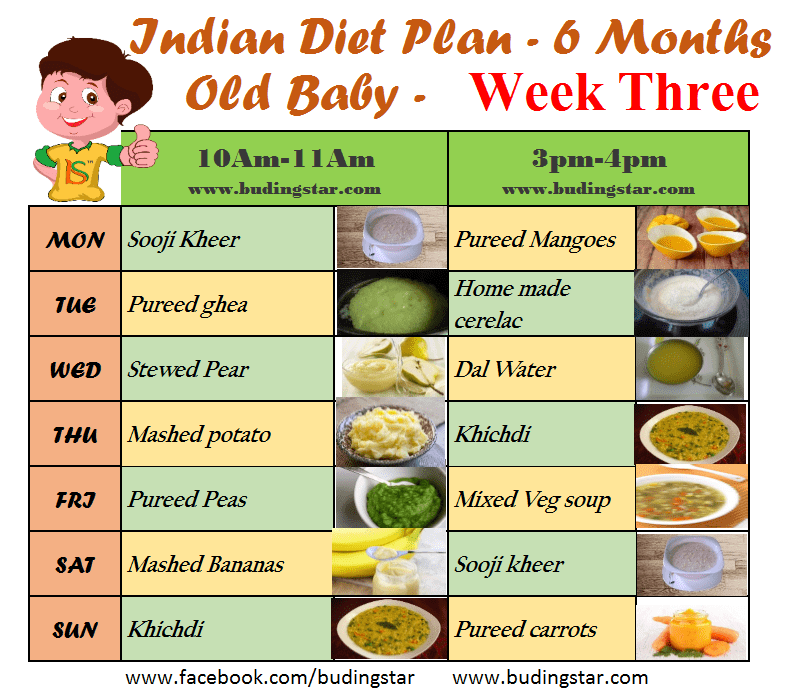 At 6 months, a typical daily portion of infant cereal mixed with breast milk or formula might be 2 to 3 tablespoons, increasing to 4 to 8 tablespoons (1/4 to 1/2 cup) by 8 months. (It's best to avoid rice cereal, though.)
At 6 months, a typical daily portion of infant cereal mixed with breast milk or formula might be 2 to 3 tablespoons, increasing to 4 to 8 tablespoons (1/4 to 1/2 cup) by 8 months. (It's best to avoid rice cereal, though.)
Fruit: Babies love the natural sweetness of fruits like pears, apples, berries, prunes, and stone fruits. Between 6 and 8 months, a baby will typically transition from about 2 to 3 tablespoons of fruit puree a day to 4 to 8 tablespoons (1/4 to 1/2 cup) of mashed or minced fruit.
Photo credit: Karla Martin for BabyCenter
Dinner for a younger baby (6 to 8 months)
If you serve a grain and fruit in the morning, consider offering a protein-rich food and vegetable later in the day. Your child may eat more or less than the amounts shown.
Protein: A baby might transition from eating 1 to 2 tablespoons of meat puree at 6 months to 2 to 4 tablespoons at 8 months, for example. Other good protein sources include cheese, unsweetened plain whole-milk yogurt, tofu, beans, and lentils.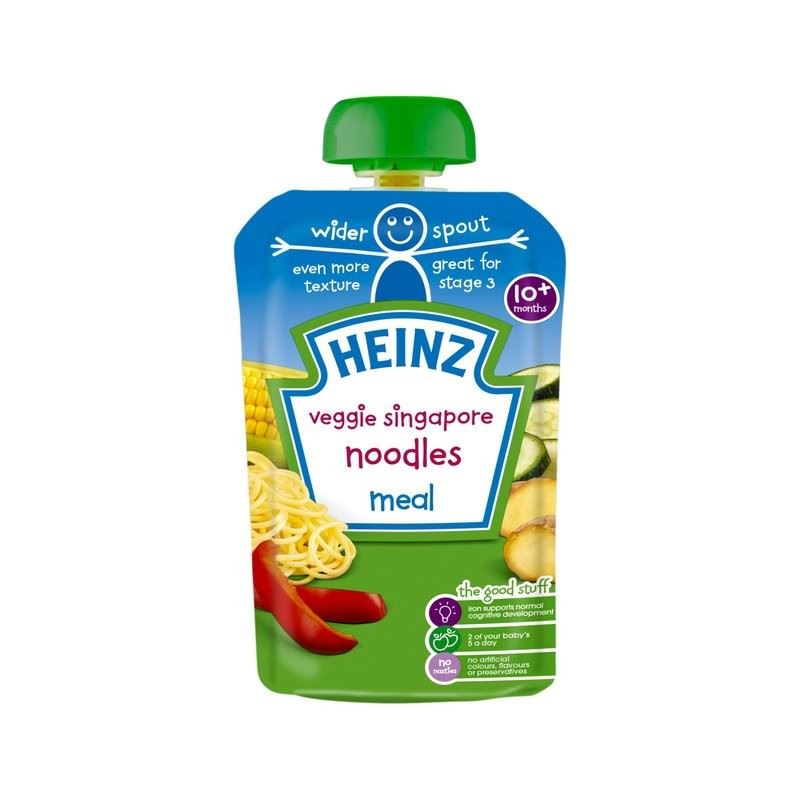
Vegetables: Between 6 and 8 months, a baby will typically transition from about 2 to 3 tablespoons of vegetable puree a day to 4 to 8 tablespoons (1/4 to 1/2 cup). Try classic favorites like carrots, spinach, or butternut squash, as well as less traditional first foods such as parsnips, beets, or asparagus.
As your child's eating skills improve, gradually add more texture by dicing or mincing foods.
Photo credit: Karla Martin for BabyCenter
How much an 8- to 12-month-old should eat
By 8 months or so, your baby is likely getting the hang of eating and needs to eat more calories to support their growing body. But since their little belly can't hold a lot of food, they'll need to eat more often. Every baby is different, but this may be a good time to try offering a third solid food meal.
During this period:
- Continue to give your baby breast milk or formula.
- Add morning and afternoon snacks. (Some babies this age are happy with breast milk or formula as their snack, while others gravitate toward solid foods.
 ) Once you've added a third meal and snacks, your baby will be eating or drinking something about every two to three hours.
) Once you've added a third meal and snacks, your baby will be eating or drinking something about every two to three hours.
- Continue to aim for a mix of proteins, vegetables, fruits, and grains.
- Introduce coarser and chunkier textures, for example, by dicing or mincing food instead of pureeing it, and graduate to soft finger foods as your baby's eating skills improve.
- Avoid foods with added sugars. Check the Nutrition Facts label on packaged foods, and try to steer clear of foods that list 1 gram or more of "Added Sugars."
- Provide healthy options, and let your baby choose how much to eat.
To visualize daily portions for an 8- to 12-month-old, check out the following photos of a typical day's menu for a baby this age, developed by the AAP.
Your child may eat more or less than these amounts. If you're concerned about how much your baby is eating, talk to their doctor for advice.
Photo credit: Karla Martin for BabyCenter
Breakfast for an older baby (8 to 12 months)
The AAP sample menu for a baby 8 to 12 months features a breakfast consisting of:
- 4 to 8 tablespoons (1/4 to 1/2 cup) whole-grain infant cereal mixed with formula or breast milk
- 4 to 8 tablespoons (1/4 to 1/2 cup) diced fruit
Note: This is an example. Your baby may eat different foods and amounts.
Your baby may eat different foods and amounts.
Photo credit: Karla Martin for BabyCenter
Morning snack for an older baby (8 to 12 months)
The AAP sample menu for a baby 8 to 12 months features a morning snack consisting of:
- 4 tablespoons (1/4 cup) diced cheese or cooked vegetables
Note: This is an example of a morning snack, which babies typically add sometime between 8 and 12 months. Your baby may eat different foods and amounts.
Photo credit: Karla Martin for BabyCenter
Lunch for an older baby (8 to 12 months)
The AAP sample menu for a baby 8 to 12 months features a lunch consisting of:
- 4 to 8 tablespoons (1/4 to 1/2 cup) unsweetened plain whole-milk yogurt or cottage cheese, or minced meat
- 4 to 8 tablespoons (1/4 to 1/2 cup) diced or mashed yellow or orange vegetable
Note: This is an example. Your baby may eat different foods and amounts.
Photo credit: Karla Martin for BabyCenter
Afternoon snack for an older baby (8 to 12 months)
The AAP sample menu for a baby 8 to 12 months features an afternoon snack consisting of:
- 4 tablespoons (1/4 cup) diced fruit or unsweetened plain whole-milk yogurt
- 1 whole-grain teething biscuit or cracker
Note: This is an example of an afternoon snack, which babies typically add sometime between 8 and 12 months.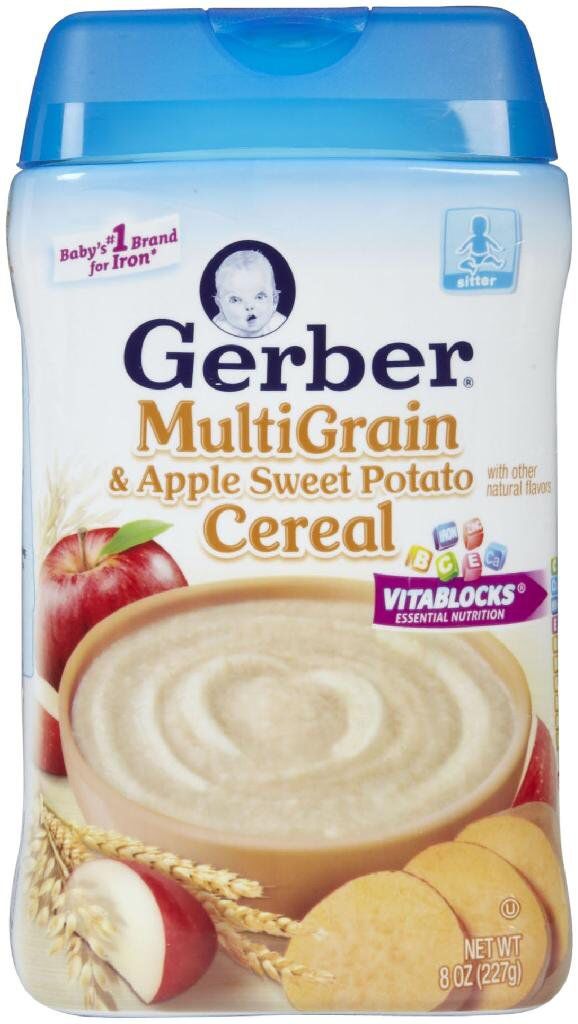 Your baby may eat different foods and amounts.
Your baby may eat different foods and amounts.
Photo credit: Karla Martin for BabyCenter
Dinner for older baby (8 to 12 months)
The AAP sample menu for a baby 8 to 12 months features a dinner consisting of:
- 4 tablespoons (1/4 cup) minced or ground poultry or meat, or diced tofu
- 4 to 8 tablespoons (1/4 to 1/2) cup diced, cooked green vegetable
- 4 tablespoons (1/4 cup) noodles, pasta, rice, or potato
- 4 tablespoons (1/4 cup) diced fruit
Note: This is an example. Your baby may eat different foods and amounts.
Photo credit: Karla Martin for BabyCenter
How much should my baby drink once they start eating solids?
Breast milk or formula will fully meet your child's hydration needs until they're about 6 months old. They may start drinking less as solid foods become a bigger part of their diet. Here are typical daily amounts by age – your baby's intake may be different, however.
6 to 8 months: 24 to 32 ounces of formula, or continued breastfeeding on demand
8 to 12 months: 24 ounces of formula, or continued breastfeeding on demand
Water: You can offer your baby water once they start eating solids, but let them self-regulate how much they drink. The Centers for Disease Control and Prevention (CDC) recommends giving babies who are 6 to 12 months old 4 to 6 ounces of water a day, but what your baby decides to drink may vary. They may drink more on a hot day, for example.
Avoid juice: Juice isn't recommended for babies younger than 12 months.
Photo credit: iStock.com / SDI Productions
Your baby has the final say
Keep in mind that these portions are an estimate. The truth is, every baby is different, and there's no set amount of food that's appropriate for every baby at every stage.
If you're worried about whether your baby is eating enough – or too much – the best advice is to look for and respond to signs that your baby is full.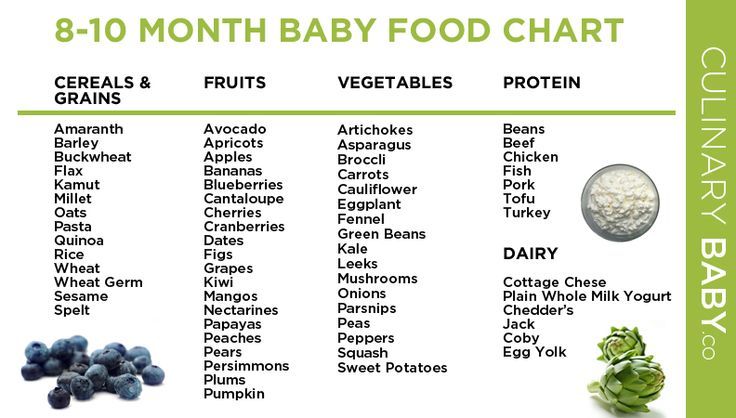
Your baby's doctor will chart their weight gain at regular intervals. If the doctor sees a consistent growth curve and doesn't have other concerns, your baby is most likely eating the right amount of food.
Hungry for more?
Age-by-age guide to feeding your baby
The 10 best foods for babies
The worst foods for babies
Using spices and seasoning in baby food
Elizabeth Dougherty
Elizabeth Dougherty is a veteran parenting writer and editor who's been contributing to BabyCenter since 2015. She's an intrepid traveler, devoted yogi, and longtime resident of Silicon Valley, where she lives with her husband and son.
Advertisement | page continues below
Diet for an 8-month-old baby
In the ninth month, fish can be introduced into the diet of children. Along with animal meat, fish is a source of complete protein with a well-balanced composition of amino acids, fat, vitamins B2, B12 and minerals. Compared to meat, fish contains 5 times less connective tissue, due to which it is quickly boiled soft, has a delicate texture after heat treatment and is easier to digest. Fish oil is characterized by a high content of polyunsaturated fatty acids, including the ω-3 class. These substances are necessary for the child to mature the brain, retina, strengthen the cardiovascular and immune systems. Sea fish contains such important trace elements for the child's body as iodine and fluorine. The child should be given 1-2 times a week instead of meat, be sure to monitor how the child tolerates fish in general and its individual varieties. Preference should be given to oceanic fish, preferably white (cod, hake, pollock), red salmon can be recommended, river pike perch, carp. nine0003
Fish oil is characterized by a high content of polyunsaturated fatty acids, including the ω-3 class. These substances are necessary for the child to mature the brain, retina, strengthen the cardiovascular and immune systems. Sea fish contains such important trace elements for the child's body as iodine and fluorine. The child should be given 1-2 times a week instead of meat, be sure to monitor how the child tolerates fish in general and its individual varieties. Preference should be given to oceanic fish, preferably white (cod, hake, pollock), red salmon can be recommended, river pike perch, carp. nine0003
Self-cooked fish is given to a child with boiled and mashed vegetables. You can also offer your baby fish and vegetable canned food, but they contain only 10 - 20% of fish.
At this age, when all the main food groups have already been introduced, special attention should be paid to the diversity of the composition of dishes. New, possibly combined products are introduced, for example, not only purees from various fruits and berries, but also their combinations with cottage cheese, cream, cereals, etc.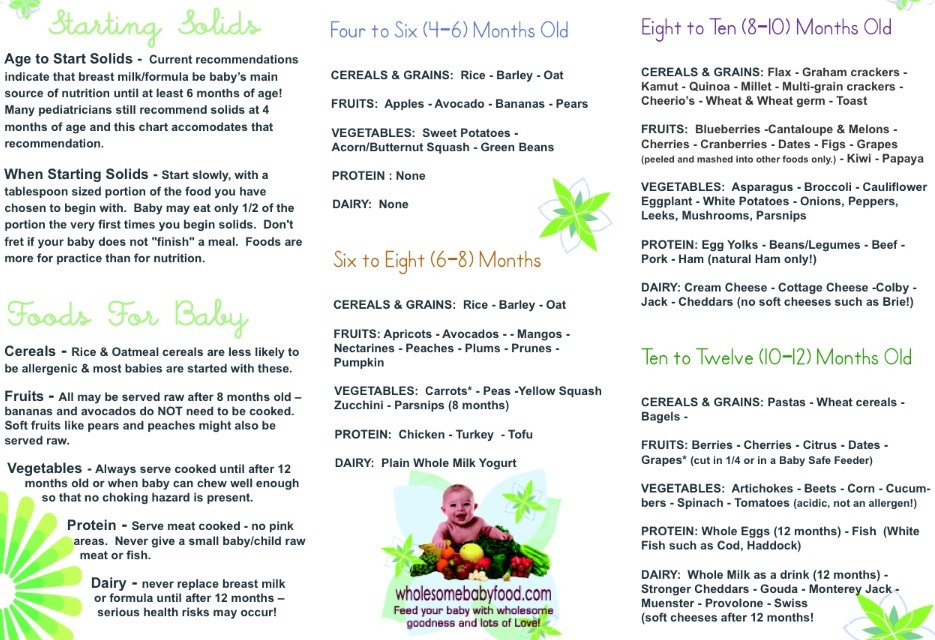
From the age of 8 months, the child's diet can be expanded to include fermented milk products (baby kefir, biokefir, bifidokefir, yogurt, bioyogurt, biolact). Fermented milk products are prepared using a special starter culture that breaks down milk protein, so that the baby can get an indispensable set of amino acids in a well-available form. Fermented milk products improve the composition of the intestinal microflora of the child, are rich in B vitamins and calcium. Their regular use favorably affects the functioning of the intestines, stimulates appetite, and increases the absorption of micronutrients. Children's dairy products are introduced into the baby's diet gradually, starting with 1 tsp. and with good tolerance increase their volume to 150-200 ml per day. nine0003
Sample menu for a healthy baby 8 months
| I feeding 6 hours | Breast milk or infant formula | 200 ml |
| II feeding 10 hours | Dairy-free* or milk porridge Butter Boiled egg yolk Fruit puree Fruit juice | 180 g | nine0024
| III feeding 14 hours | Vegetable puree Vegetable oil Meat puree Fruit juice | 170 g 1/2 tsp 50 g 50 ml |
| IV feeding 18 hours | Cottage cheese Baby biscuits Fruit puree Supplementation with breast milk or baby kefir/yogurt | 40 g |
| V feeding 22 hours | Breast milk or infant formula | 200 ml |
* - diluted with breast milk, infant formula or water
Approximate daily ration for an 8 month old baby allergic to cow's milk proteins
| I feeding 6 hours | Breast milk or formula for children allergic to cow's milk proteins | 200 ml |
| II feeding 10 o'clock | Dairy-free* porridge Vegetable oil Fruit puree (apple, pear) | 120 g 1 tsp 80 g |
| III feeding 14 hours | Vegetable puree Vegetable oil Meat puree | 170 g 1 tsp 40 g |
| IV feeding 18 hours | Vegetable puree or porridge Vegetable oil Meat puree | 170 g 1 tsp 30 g |
| V feeding 22 hours | Breast milk or formula for children allergic to cow's milk proteins | 200 ml |
* - diluted with breast milk or formula for children allergic to cow's milk proteins
approximate diet for a week, menu for a day with artificial and breastfeeding for an 8 month old baby
Published: 02/10/2021
Reading time: 3 min.
Number of reads: 88951
Author of the article: Ponomareva Yuliya Vladimirovna
Pediatrician, Candidate of Medical Sciences, Allergist-Immunologist . The process of intensive growth and development continues - the baby is rapidly mastering new motor skills, improving in speech and cognitive activities. nine0003
The pace of growing up and high activity determine the clear requirements for the nutrition of the baby, which must quantitatively and qualitatively meet the needs of children at this life stage. By the 8th month of life, the child's digestive tract is already quite mature. It is able to digest and assimilate the products of the main food groups. Let's look at the basic principles of compiling a baby's diet, and also develop a menu for 8 months, indicating an approximate list of dishes and a meal plan for a week. nine0003
Contents: Hide
- General principles
- A must in the diet
- Sample menu for a week for 8 months
General principles
It is fine if a mother continues to breastfeed at this age Breast milk is no longer the basis of the diet, but continues to be a source of easily digestible and beneficial nutrients, and also protects the baby from many infectious diseases. If the baby is artificially fed, use an adapted mixture in the diet that suits him well and matches his age. In addition to breastfeeding, an 8-month-old baby's eating schedule includes 4-5 meals. Of these, three are basic (breakfast, lunch and dinner), two are additional (second breakfast and afternoon tea). The baby already withstands 3.5–4 hours between meals and at least 6 hours at night. The volume of each feeding is 170–200 ml and approximately 1000 ml/g per day. nine0003
If the baby is artificially fed, use an adapted mixture in the diet that suits him well and matches his age. In addition to breastfeeding, an 8-month-old baby's eating schedule includes 4-5 meals. Of these, three are basic (breakfast, lunch and dinner), two are additional (second breakfast and afternoon tea). The baby already withstands 3.5–4 hours between meals and at least 6 hours at night. The volume of each feeding is 170–200 ml and approximately 1000 ml/g per day. nine0003
A must in the diet
Your 8-month-old baby's daily menu should include the main food groups that guarantee the supply of vital nutrients - proteins, fats and carbohydrates. What products must be included in the menu at this age? Porridge is one of the first and most important complementary foods. It is rich in all the main nutrients, provides long-lasting satiety and has a pleasant taste. By the 8th month of life, babies digest and assimilate dishes from various cereals well, therefore, multi-component cereals with natural fruit or vegetable additives, dairy-free or based on specially prepared milk can be used in nutrition. nine0003
nine0003
Vegetables and fruits do not have a high nutritional value, but are a major source of fiber. Therefore, they are also required in the daily menu. Meat complementary foods are a source of protein that is complete in terms of amino acid composition, and a baby should receive 60-80 grams of meat per day. Dairy products are another source of complete protein and easily digestible fat. However, the introduction of non-adapted dairy products can cause allergies and increase the load on the baby's kidneys. In this regard, the menu should contain no more than 50 grams of cottage cheese daily. From 8 months, fermented milk drinks for baby food can be introduced into the diet of a healthy child. nine0003
In addition to animal fats, the daily diet should include vegetable oils as a source of polyunsaturated fatty acids, which are absolutely necessary for a growing organism.
In addition to essential nutrients, a daily intake of vitamins and minerals is just as important.


